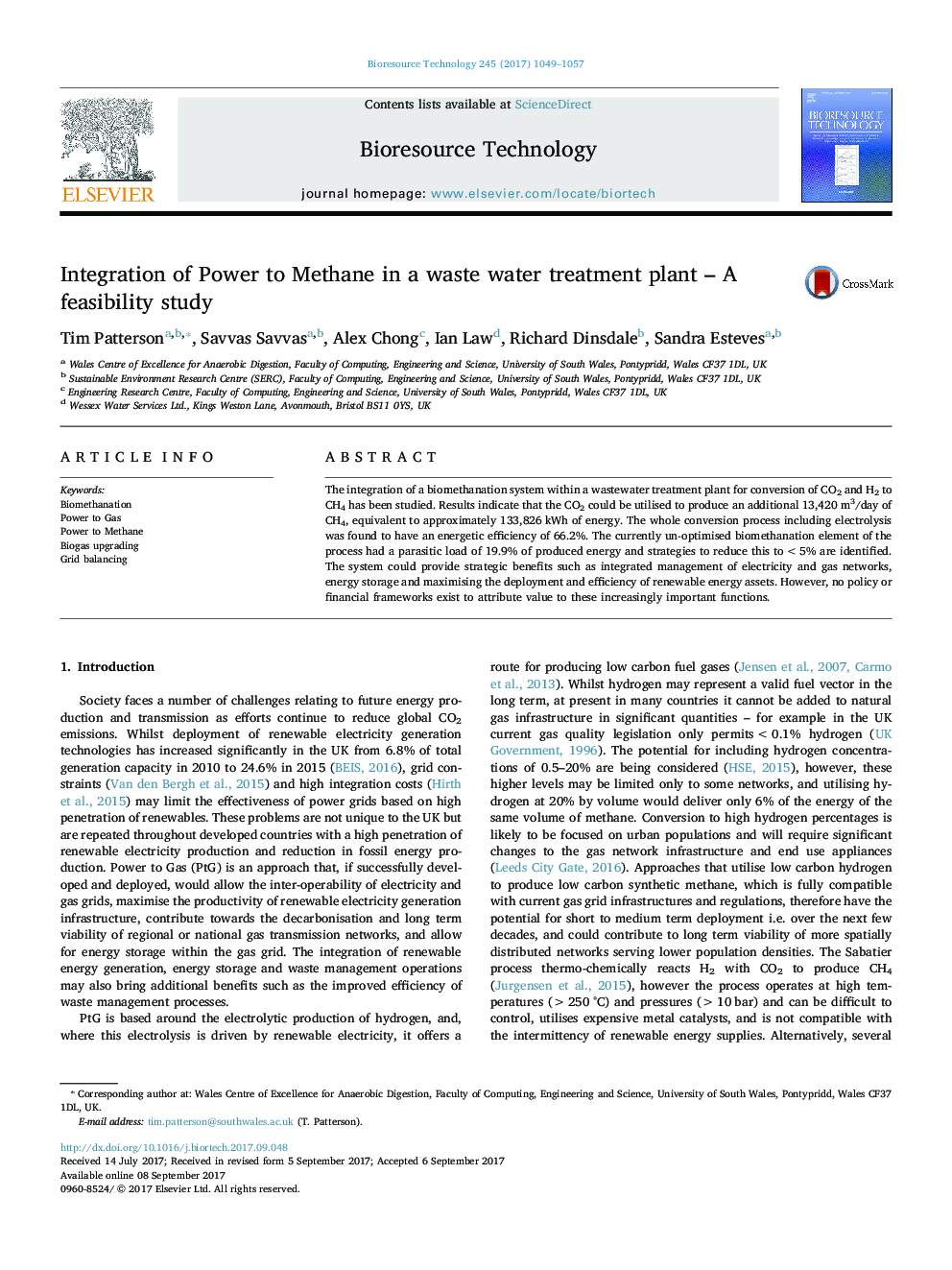| Article ID | Journal | Published Year | Pages | File Type |
|---|---|---|---|---|
| 4996807 | Bioresource Technology | 2017 | 9 Pages |
â¢The system converted 66.2% of primary energy to methane.â¢Biomethanation stage had a parasitic energy demand of 19.9% of CH4 energy.â¢Biomethanation energy demand could be reduced to <5% of produced energy.â¢Current regulations do not recognise strategic benefits of the approach.
The integration of a biomethanation system within a wastewater treatment plant for conversion of CO2 and H2 to CH4 has been studied. Results indicate that the CO2 could be utilised to produce an additional 13,420Â m3/day of CH4, equivalent to approximately 133,826Â kWh of energy. The whole conversion process including electrolysis was found to have an energetic efficiency of 66.2%. The currently un-optimised biomethanation element of the process had a parasitic load of 19.9% of produced energy and strategies to reduce this to <5% are identified. The system could provide strategic benefits such as integrated management of electricity and gas networks, energy storage and maximising the deployment and efficiency of renewable energy assets. However, no policy or financial frameworks exist to attribute value to these increasingly important functions.
